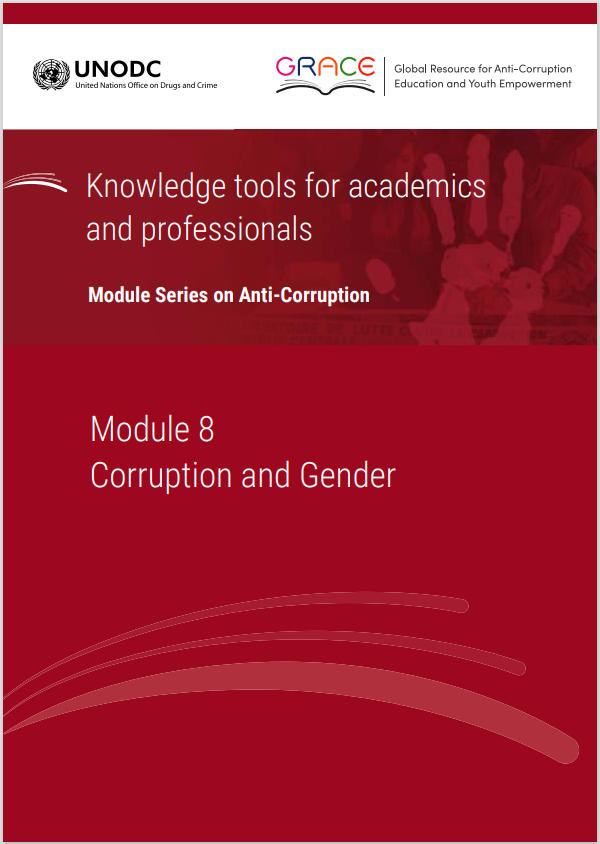This module is a resource for lecturers
Guidelines to develop a stand-alone course
This Module provides an outline for a three-hour class, but there is potential to develop its topics further into a stand-alone course. The scope and structure of such a course will be determined by the specific needs of each context, but a possible structure is presented here as a suggestion. It is based on the textbook of Rachels & Rachels (2012).
|
Session |
Topic |
Brief Description |
|
1. |
Research at the turn of the century |
Discussions of foundational papers by Dollar and others, 2001; Swarmy and others, 2001; Sung, 2003; Goetz, 2007. |
|
2. |
Revisiting those theories |
Discussions of work by Stensöta and others 2014, Esarey and Chirillo 2013. |
|
3. |
Deconstructing the stereotypes |
Descriptive and injunctive stereotyping, and their role in corruption's gendered impacts. |
|
4. |
Opportunity structures for corruption |
Revisit Goetz's argument, but bring in work on patronage and clientelist networks. See Wängnerud 2008, Szwarcberg Daby 2016. |
|
5. |
Corruption's gendered impacts (i) |
Overview of the issue, revisit discussions of the pros and cons of sex-disaggregated data. |
|
6. |
Corruption's gendered impacts (ii) |
Focus on sextortion. |
|
7. |
Gender mainstreaming (i) |
Gender analysis, gender audit, gender budgeting. |
|
8. |
Gender mainstreaming (ii) |
Gender stakeholder consultations, gender procurement, gender equality training. Introduce essay assignment instructions. |
|
9. |
Review week |
Exercises to assess and reinforce learning over the course. Discussion of possible structures of the essay and feedback for any pre-class preparation of essay plans. |
 Back to top
Back to top
